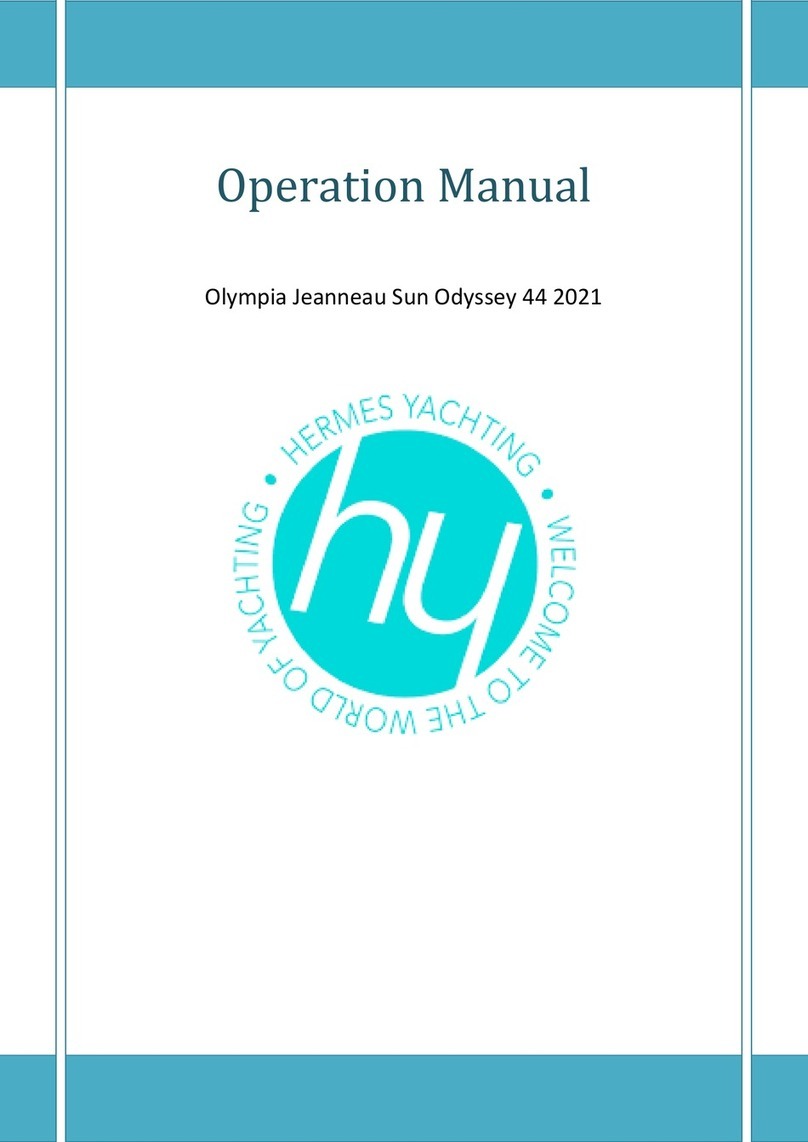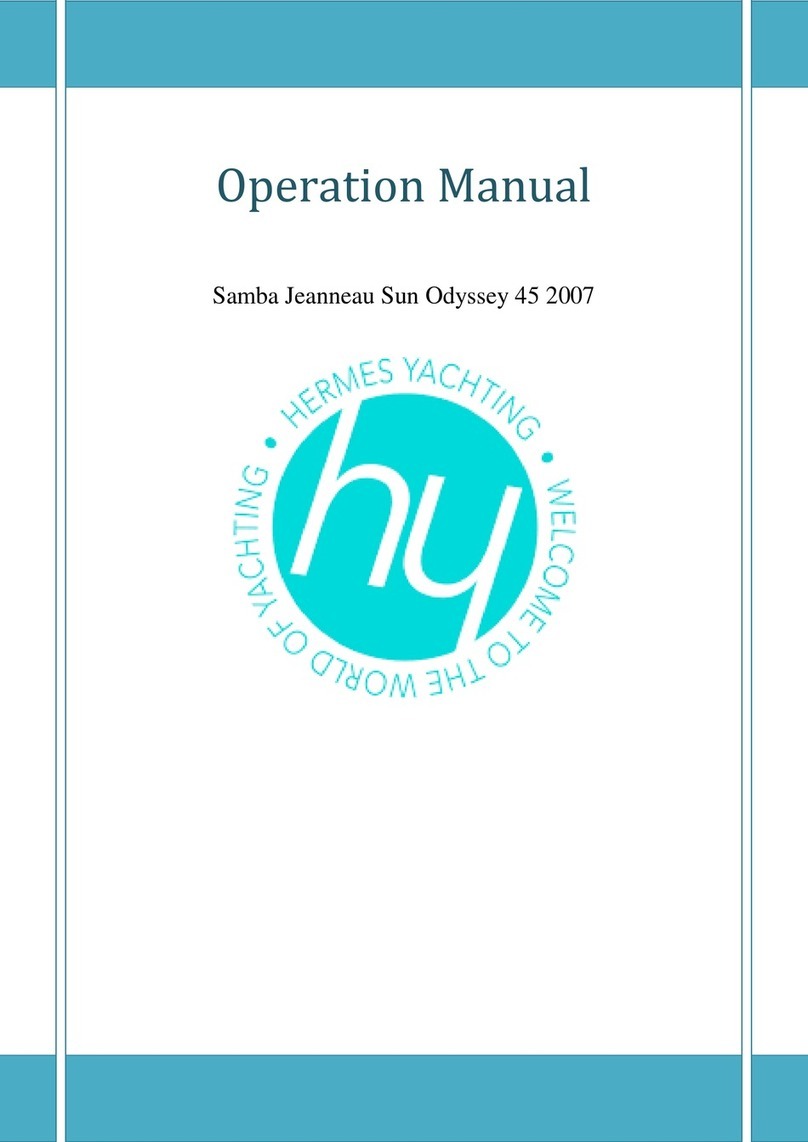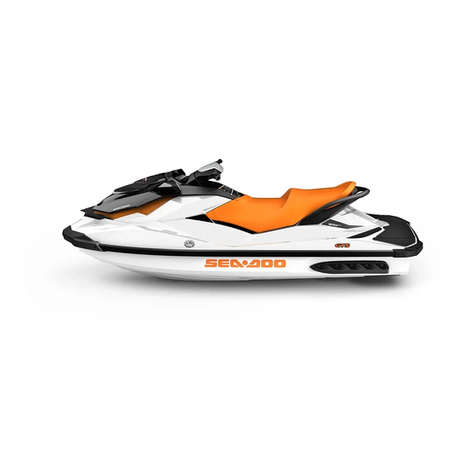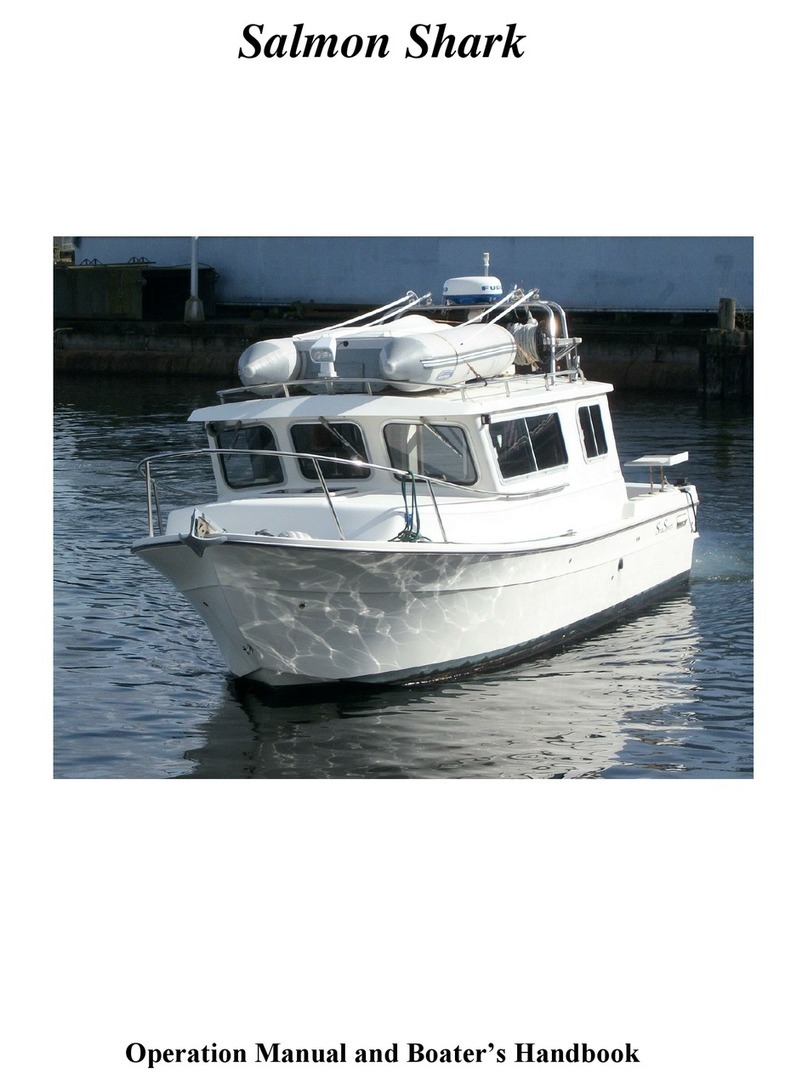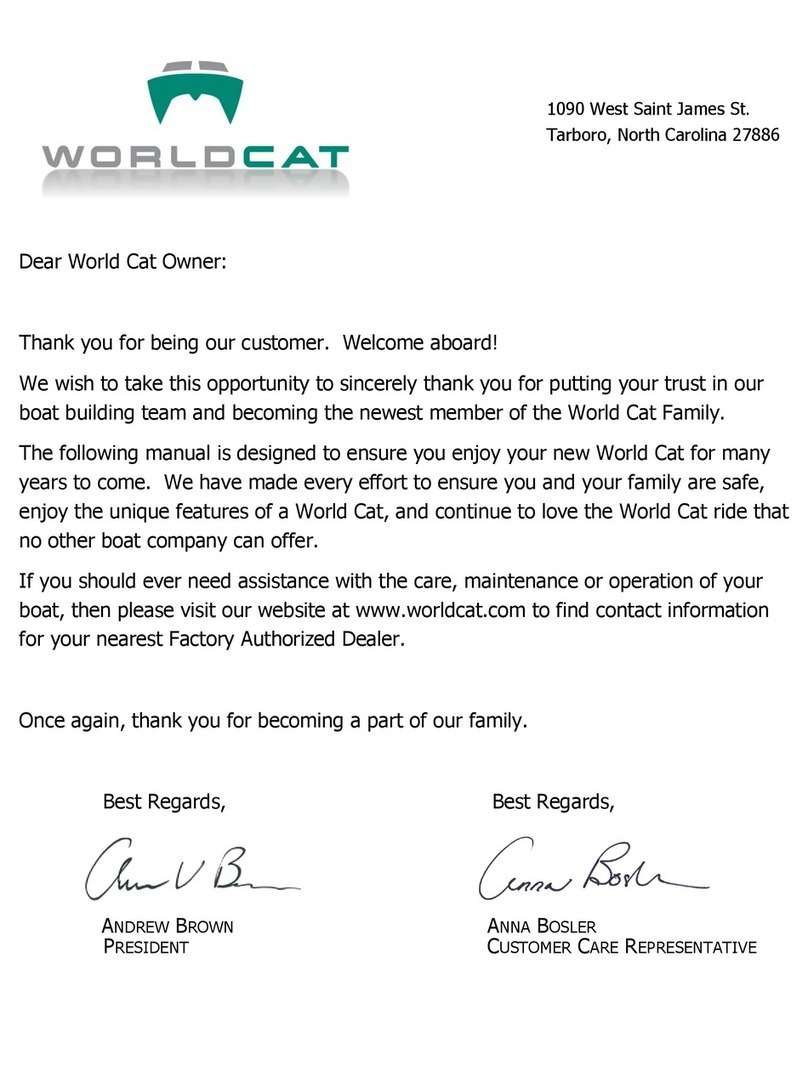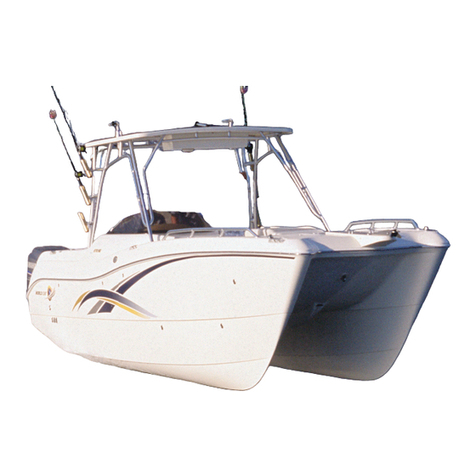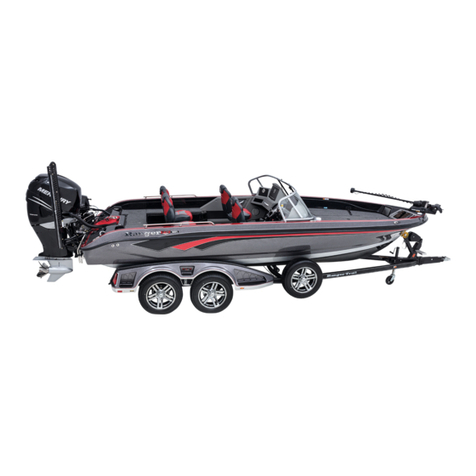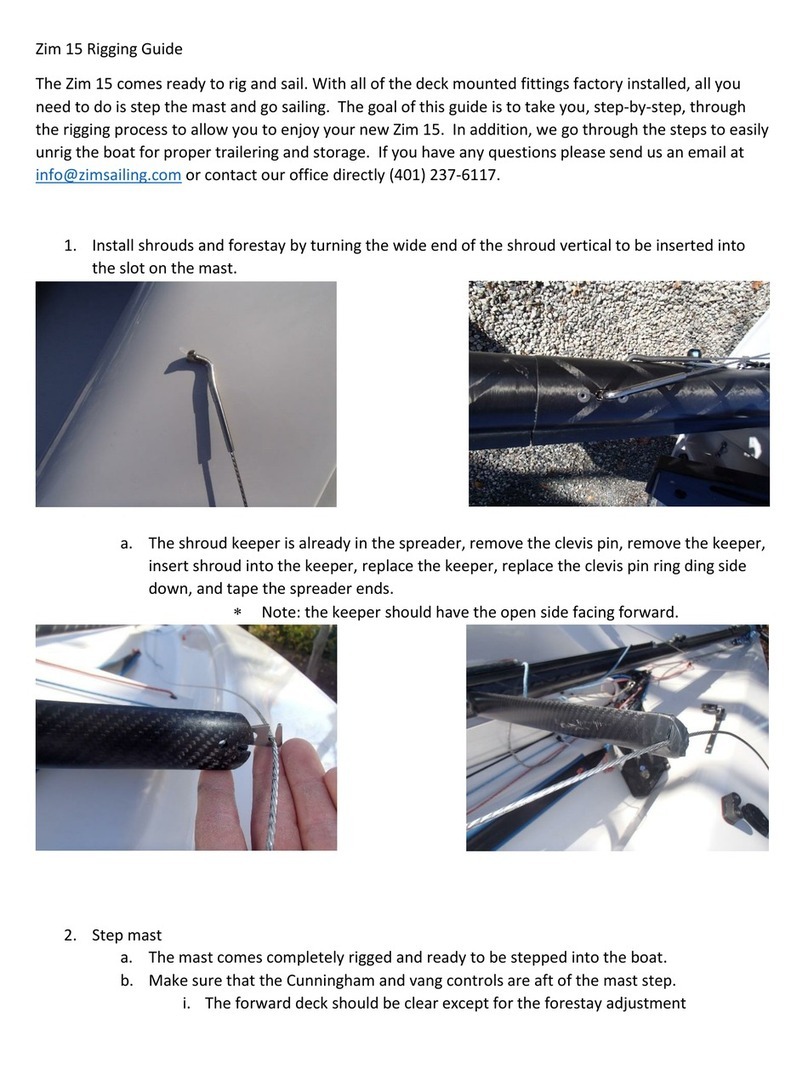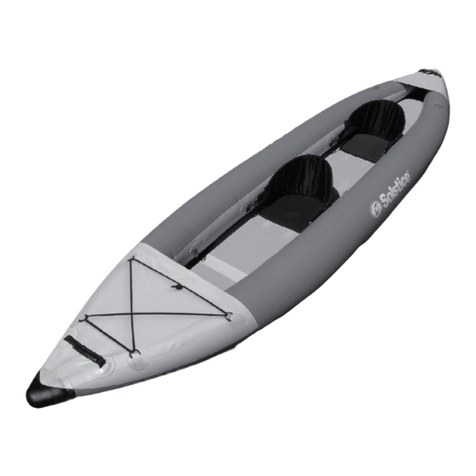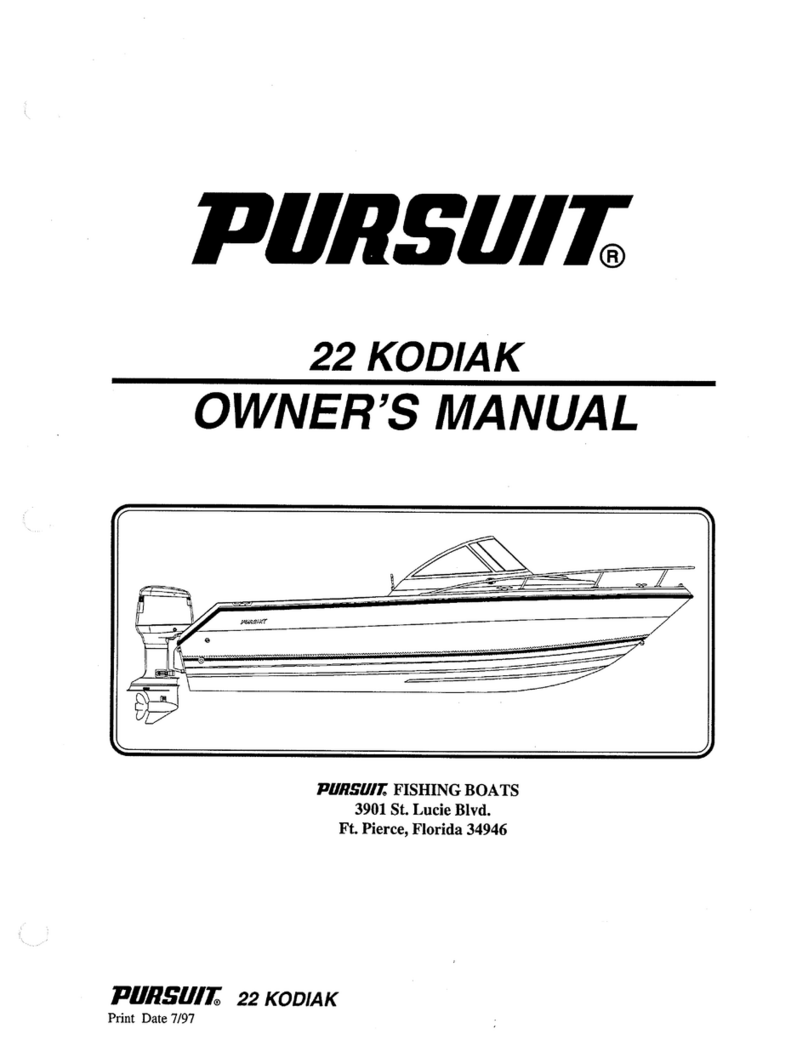Hermes Yachting Charles Hanse 508 User manual

Operation Manual
Charles Hanse 508

Σελίδα 2από 25
Operation Manual
INTERIOR 4
Control Panel 4
Battery Charger Location 4
Interior / Exterior Radio 5
VHF 6
GMDSS 8
General Switches 9
Service 9
Engine 9
Thruster 9
Thermal Fuses 10
Anchor fuse 10
Batteries Location 10
Service 10
Engine 11
Thruster 11
Water System 11
Location of fresh water pump 11
Location bilge pump 13
Operation of toilet pumps 13
Operation of shower pumps 14
Operation /Location of Waste tanks/valves 14
Oven/Stove 14
Location of gas valves inside 15
Operation BBQ 15
Location of Gas bottles 16
Engine 16
Emergency stop 16
Diesel Valves 16
Engine oil check 17
Saildrive oil check 17
ΕΧTERIOR 18
Thruster Controller 18

Σελίδα 4από 25
INTERIOR
Control Panel
Yacht control panels are electronic devices for the remote control of one or more pieces
of equipment including windlasses, navigation lights, and thrusters.
These devices can control the windlass, thrusters, navigation lights, alarms,
video surveillance systems, windshield wipers, engines, fuel, water and
oil levels, generators and other equipment.
The control panel is important because:
1. It is responsible for monitoring the health of Yacht
2. Keeping you safe
Its use is described below: The most important and unique to use
are in the LEFT SIDE.
Left Side
Right Side (spare buttons)
Interior Lights
Tricolor Lights
Navigations Lights
Deck wash pump
Anchor Lights
Pump with hose
Steaming Lights
Stern door control
Refrigerator/Freezer
Main furled control
Fresh Water Pump
Dingy winch control
Bilge Pump manual override
-
Navigations Electronics
Holding tank pump
Anchor Winch Control
-
Winches Control
-
Battery Charger Location
A battery charger or recharger is a device that stores energy in a battery by running
an electric current through it. The Master volt Charge Master supplies a maximum
capacity wherever you are via auto-ranging. Auto-ranging ensures perfect fully
automatic operation anywhere in the world, regardless of the available mains voltage
(90-265 V AC, 50 or 60 Hz).
You will find it left of the chart table and behind of the couch.

Σελίδα 5από 25
Interior / Exterior Radio
Radio works by transmitting and receiving electromagnetic waves. The radio signal is
an electronic current moving back and forth very quickly. A transmitter radiates this
field outward via an antenna; a receiver
then picks up the field and translates it to
the sounds heard through the radio.

Σελίδα 6από 25
VHF
A very high frequency (VHF) transceiver is a device that is composed of a transmitter
and receiver that operates between 30 megahertz (MHz) to 300 megahertz (MHz). The
wavelength of a VHF transceiver varies between 39.37 inches (1 m) to 393.70 inches
(10 m), mainly depending on the frequency used.
1. Channel knob / Press to Select Turn knob for channel selection, menu scrolling,
alphanumeric entry, and fine adjustment of backlight level (dependent on active menu).
Short press to make selections in menus. Long press to open MY CHANNELS.
2. VOL / SQL Volume and Squelch level. Short press knob to select which control to
adjust. Which is currently selected is indicated by a small triangular arrow above the
level bar for each option. Turning the knob clockwise increases setting, anti-clockwise
decreases it. Volume control is common to internal and external speaker. Long press to
open SHORTCUTS.
3. X (EXIT) Press X when navigating menus, to clear incorrect entries, to exit from a
menu without saving changes, and to back up to the previous screen.

Σελίδα 7από 25
12. 16 (Radio, handset mic and wireless handset) Short press to change to priority
channel. Press again to return to original channel. The default Priority Channel is CH16.
13. DISTRESS (Radio and wireless handset) Short press to start a distress call, where
the nature of distress can be selected from alist. Long press the distress button to initiate
an ‘undesignated’ distress call. The Distress call is broadcast to all DSC equipped
radios, so will create an alarm on every DSC radio within range. If position information
is available it will be included in the transmition.
15. Channel change (Handset mic and wireless handset) Short press () goes up one
channel, or () goes down one channel. Holding either key will, after a short delay, step
rapidly through the channels.
16. VOL +/- (Volume) (Handset mic only) Change the volume on the handset
microphone. Short press (+) increases the volume, or (-) decreases the volume.
17. PTT (Push-to-talk) (Handset mic and wireless handset) Press button to transmit.
Only depress for duration of message to be broadcast. Radio can’t receive while it is
transmitting.
18. Handset microphone (front) connection. Plug in the removable handset microphone.
Alternatively, it can be connected to the rear of the radio.
19. MIC (Microphone) (Handset mic and wireless handset) the microphone can be
connected to the front MIC connector or rear MIC connector. An optional 5 m or 10 m
extension cable is available for mounting the microphone in a different location.
20. POWER / EXIT (Wireless handset) Short press to EXIT when navigating menus,
to clear incorrect entries, to exit from a menu without saving changes, and to back up
to the previous screen. Long press to turn radio on or off.
22. VOL / SQL (Wireless handset) Short press to select which control (Volume and
Squelch) to adjust. Use the + & - buttons to adjust.
23. +/- (Wireless handset) Short press to adjust the selected control (Volume and
Squelch).

Σελίδα 8από 25
GMDSS
The Dual Energy Power Supplies and Battery Chargers are
designed and developed for charging and maintenance of voltage
on lead-acid batteries and provide consistent and uninterrupted
power supply (main or backup). You will find it at the chart table
area.

Σελίδα 9από 25
General Switches
This battery master switch functions as a battery isolator and a theft deterrent device.
The battery master switch is commonly used in vehicle applications, such as marine,
transportation and automotive. The switch has an impact-resistant housing and has a
detachable key for added security.
Service
You will find the service battery switch in front of the
chart table.
Engine
You will find the main switch that turns off the boat's currents in the stern
left cabin, behind of the door.
Thruster
The switch that turns off the Retractable
Thruster battery power will be found at the
skipper cabin, when you open the cap.

Σελίδα 10 από 25
Thermal Fuses
Fuses are mechanisms that are inserted into an electrical circuit in order to interrupt the
supply of electricity throughout the electrical installation or in individual circuits of the
installation, when large current values occur due to short circuit or overload to protect
the wiring lines. Are always installed after the circuit breakers and are never installed
in ground conductors. The use of these fuses is as follows:
Anchor fuse
At the image indicates fuse of the Windlass. In case the fuse has fallen,
you will see the yellow plastic protruding at the position zero (0), with
the use of your hand (fingers) you press the yellow plastic down so that
it reaches at the position one (1). Then does an operation test to find out
if everything is working properly. You will find it under of the chart
table.
Batteries Location
A battery is a device that stores chemical energy and converts it to electrical energy.
The chemical reactions in a battery involve the flow of electrons from one material
(electrode) to another, through an external circuit. The flow of electrons provides an
electric current that can be used to do work.
Service

Σελίδα 11 από 25
You will find the service batteries on the right side of the
chart table and under the living room cushion.
Engine
You will find the engine battery inside the engine room.
Thruster
You will find the thruster battery at the skipper cabin under
the bed.
Water System
Freshwater pumps deliver water to fixtures onboard a boat. Pressurized water systems
make life aboard more comfortable by providing water "on tap" for dishwashing,
showers and other applications.
Location of fresh water pump

Σελίδα 12 από 25
You will find the fresh water pump at the bow cabin, under
the bed.

Σελίδα 13 από 25
Location bilge pump
A bilge pump is a water pump used to remove bilge water.
You will find it on the floor in front of the stairs. On this yacht
the bilge pump is automatic. So keep the corresponding
button always on.
Operation of toilet pumps
The toilet is one of the most used pieces of equipment on your boat. Correct operation
of the toilet is essential for the safety and comfort of your crew and craft.
Open inlet and outlet seacocks (and secondary
valves if fitted).
Half fill the bowl with warm fresh water.
Keeping the Flush Control Lever in the Shut
( ) position, pump out the warm water.
Normal use
Open inlet and outlet seacocks (and secondary valves if fitted).
Before use, ensure that there is enough water in
the bowl to prevent the toilet paper
becoming compacted at the bottom of the
bowl. If the bowl is empty, move the Flush
Control Lever to the Open ( ) position
and pump the handle up and down until the
flushing pump is primed and water enters the
bowl. Then Shut ( ) the Flush Control.
Operate the pump with long, smooth strokes
for efficient and easy operation.
During use, pump as necessary to keep the
contents of the bowl low enough for comfort.
After use, keep the Flush Control Shut ( ) and pump until the bowl is empty.

Σελίδα 14 από 25
When the bowl is empty, Open ( ) the Flush Control
again, and continue to pump until all waste has either left
the boat, or reached the holding tank (allow 7 complete
up/down strokes per meter (yard) length of discharge
pipework).
NOTE: Do not put in: Sanitary Towels, Wet Strength
Tissues, Cotton Wool, Cigarettes, Matches, Chewing
Gum, or any solid objects, Petrol, Diesel, Oil, Solvents of
any kind or water more than hand hot.
Operation of shower pumps
On this boat the shower pumps at the bow are automatics. The
shower of stern right toilet is manual, you need to turn on and turn
off the black button.
When the pump is fitted with a special negative head kit, the shower
is operated by turning on the mixer valve and starting the pump by
turn on the switch once. The pump will then run as normal, don’t
forget to switch off the shower pump after use.
Operation /Location of Waste tanks/valves
A stop-and-waste valve is a fitting that
attaches to your irrigation sprinkler lines, and
it prevents waste from freezing.
When closed, they go to
waste tank until you open
the valve.
As all valves, when it's vertical to the tube
connected to it, it is closed and the excrement
ends at the waste tanks. When it is parallel to
the tube then it is open and the waste tank
contents are emptied to the sea. You will find
three waste valves, the 1st, and the 2nd are at the
bow side at the hall and the 3nd is at the stern
toilet if you open the cap you will find it.
Oven/Stove

Σελίδα 15 από 25
In order to turn on the oven or a hob, press the respective switch inwards
and turn clockwise. Without letting go light up the hob with a lighter
and hold for 5 seconds, then release. If the flame does not hold try
holding in the switch for longer. Also make sure no liquids are spilled
on the hobs.
Location of gas valves inside
In case you need to insulate the gas inlet in the kitchen under the oven,
opening the cupboard there is the gas outlet valve in the kitchen. When
the valve is parallel to the pipe it is open and when it is perpendicular
to the pipe it is closed.
Operation BBQ

Σελίδα 16 από 25
Location of Gas bottles
For more safety if you want to close all system of gas you need
to go outside at the starboard side and to open thelocker. There,
you will find the bottle gas. If you turn the valve clockwise you
open the gas system and when you turn the valve from the other
direction you close the gas system.
Engine
An engine is some machine that converts energy from a fuel to some mechanical
energy, creating motion in the process.
Emergency stop
IN CASE OF EMERGENCY AND ONLY IN THIS CASE!!!
If you need to turn off the engine, you will be directed to the rear
right cabin to have a picture of the engine as in the photo.
If you want to turn it off, you will press the red button down and rotate
it to the left.
Diesel Valves

Σελίδα 17 από 25
This yacht has two diesel tanks. When you want to change
the diesel tank you need to go in front of the stairs and to
open the cup. When the valve is on the right you take diesel
from the 1st diesel tank and when the valve is go at the stern
right side on the left you take diesel from the 2nd diesel tank.
Engine oil check
If you want to check your oil, you will be directed to the
rear right cabin to have a picture of the engine oil as in
the photo.
Saildrive oil check
If you want to check your saildrive oil, you will be directed to
the rear left cabin to have a picture of the saildrive oil as in the
photo.

Σελίδα 18 από 25
ΕΧTERIOR
Thruster Controller
Thrusters are designed with propellers facing in a sideways direction so when they are
turned on, they push the bow or stern of a boat sideways through the water, in either
direction. If only one thruster is used, for example in the bow, then the boat will also
turn and change orientation.
How to turn on the thruster? You press ON/OFF button,
continuously, marked by the symbol . It will appear the
orange lights. You need to wail some minutes. After that you
press right you go right or you press left you go left.
How turn off the thruster? You press continuously the
ON/OFF button marked by the symbol continuously until
the light it will be off.
ATTETION: Do not use it continuously, it is better to use it for 2-3 second, and
then you leave it.

Σελίδα 19 από 25
Autopilot Operation

Σελίδα 20 από 25
Table of contents
Other Hermes Yachting Boat manuals
Popular Boat manuals by other brands
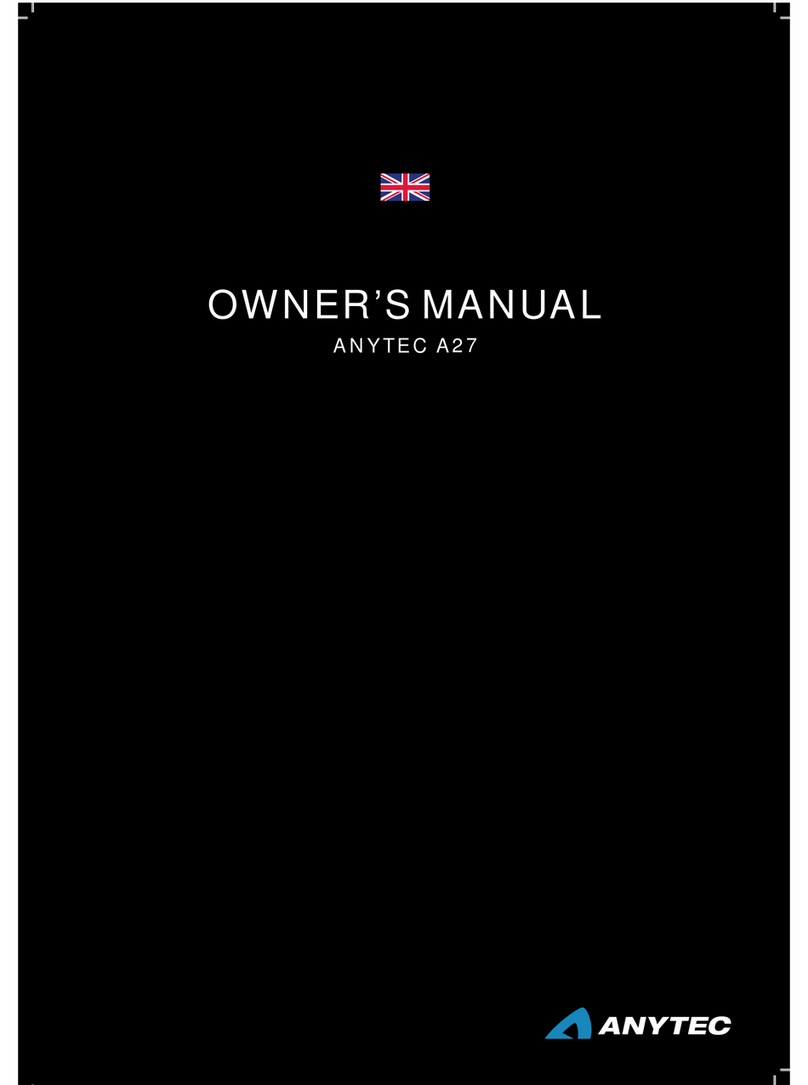
ANYTEC
ANYTEC A27 owner's manual
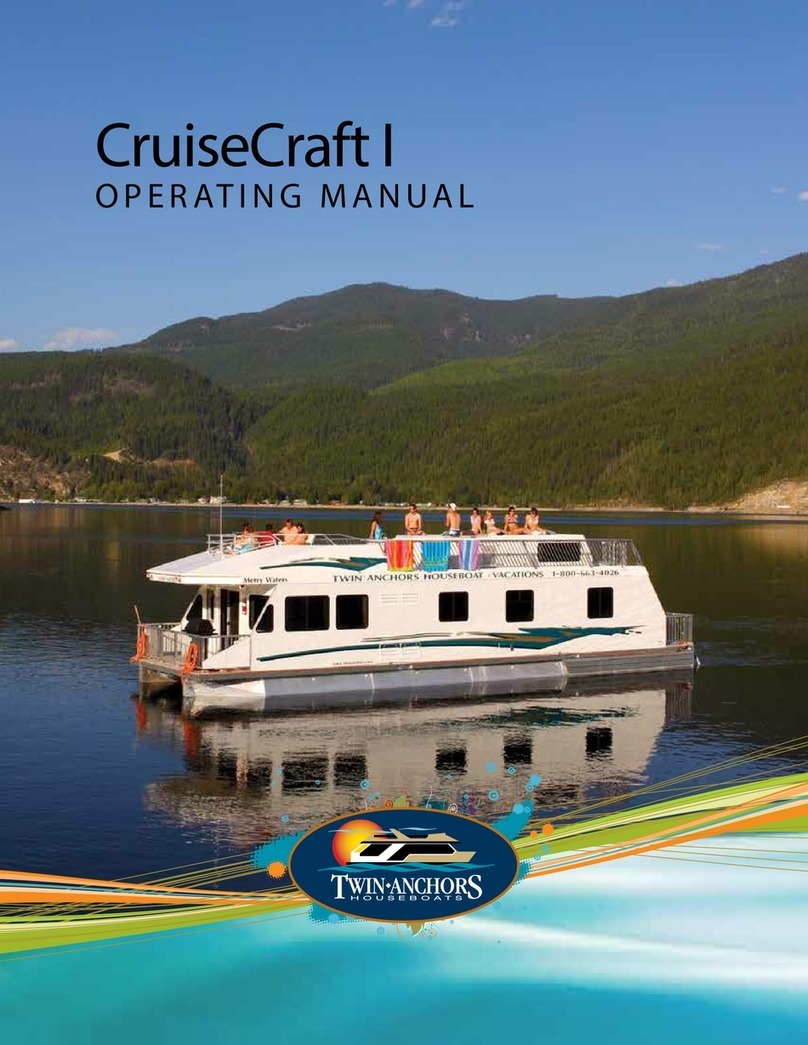
Twin Anchors
Twin Anchors CruiseCraft I operating manual
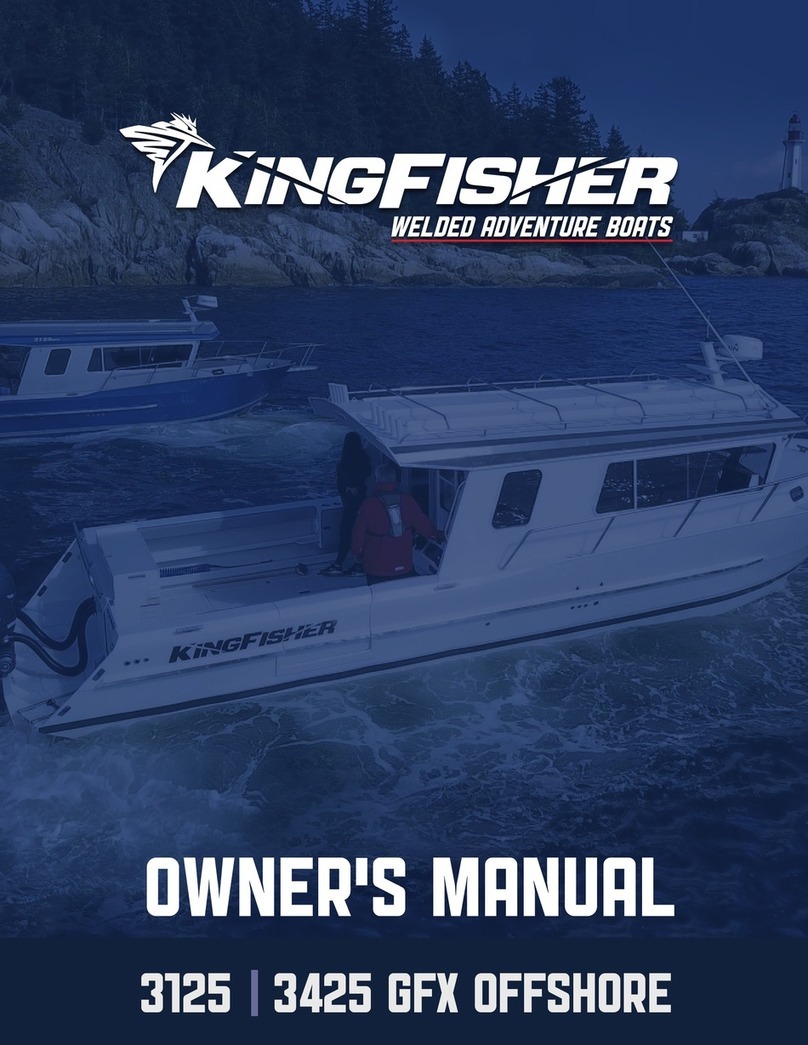
Kingfisher
Kingfisher 3125 GFX OFFSHORE owner's manual

Nautiraid
Nautiraid GRAND NARAK 550 Instruction book

Yamaha
Yamaha 2019 WaveRunner GP1800R Owner's/operator's manual
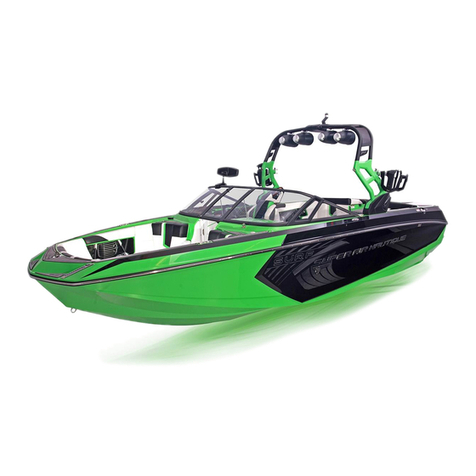
CORRECT CRAFT
CORRECT CRAFT super air 230 2018 owner's manual

